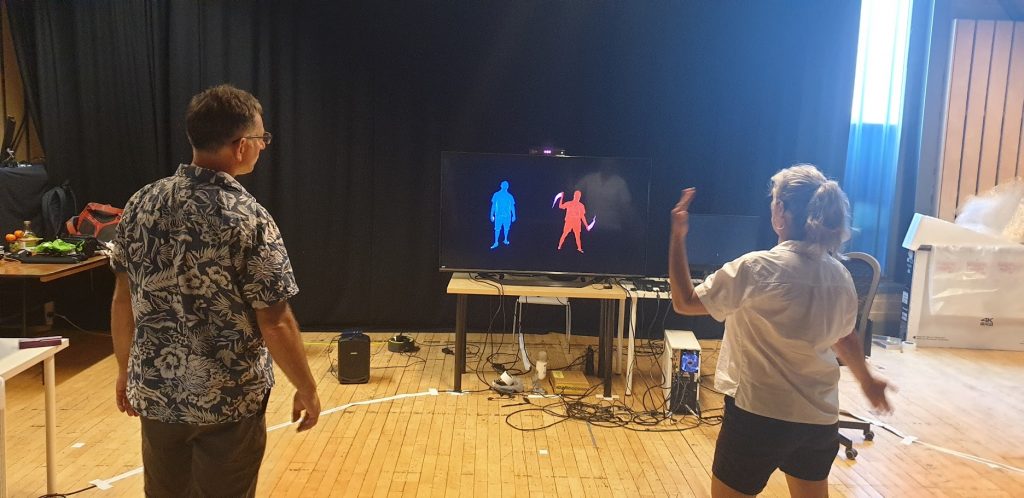I am pleased to be working with Cambridge-based art tech producers, Collusion, on a new interactive installation to be exhibited in Cambridge in late 2020. The venue will hopefully be Sook Cambridge.


Sook is an ‘adaptive retail space’ that can be easily customised to suit typical retail media requirements and booked by the hour. They have also experimented with hosting more artsy events. Sook at the Grafton Centre, Cambridge, features a number of grouped screens and addressible lighting. It’s the perfect environment for immersive audio-visual content, but naturally there are issues of interoperability to be addressed when installing a bespoke system that features realtime interaction.
The original project elevator pitch was “a social distancing compatible, two-person installation that makes use of whole-body interaction to explore inter-personal energies and connections within a 360° audio-visual environment”.

Since acceptance of the initial proposal, this project has already come a long way with writer, artist and multi-talented creative person Anna Brownsted joining to help develop narrative elements. Anna, myself plus Rachel Drury and Rich Hall from Collusion, all took part in a socially-distanced residency at Cambridge Junction in early August in order to get things moving.
There is a significant creative concept, currently in development, that will drive all narrative components and frame the interactions. I’ll write some more about this in due course, but for now will focus on documenting the residency and discussing key intentions for the project. I should add that this project is part of my ongoing research inquiry into gestural and embodied interaction within public-facing art. Non-technical areas of knowledge that I seek to develop are:
- the nature of agency within public space and how this is mediated through performative interaction
- the mechanics of co-interaction, especially the compete-callaborate axis
- non-contact interaction design, especially in the context of the current Covid-19 crisis
- the use of narrative to frame interactive experience
The project involves a relatively complex technical set-up with a single Kinect and host computer driving multiple screens and eventually surround audio and lighting, via DMX. The Kinect (v2) runs through Unity and allows pretty robust skeleton tracking, therefore providing the foundation for full-body interactive gestures. I will cover technical aspects more fully at a later date, but of course, expect there to be much learning in this area.
Here are a few photos and a video that illustrate the prototypes that were developed and tested during the residency.





The video shows the fireball mechanic being tested at Sook.
The residency was massively informative in terms of validating the core interactions and kick-starting the project, especially by forming the team. It was a refreshing novelty to work in the same room as others after lockdown, even if we were santising left, right and centre! We also established some key technical parameters. It’s a really exciting, although slightly daunting project, especially as it runs in parallel with my full-time teaching responsibilities! More updates soon.